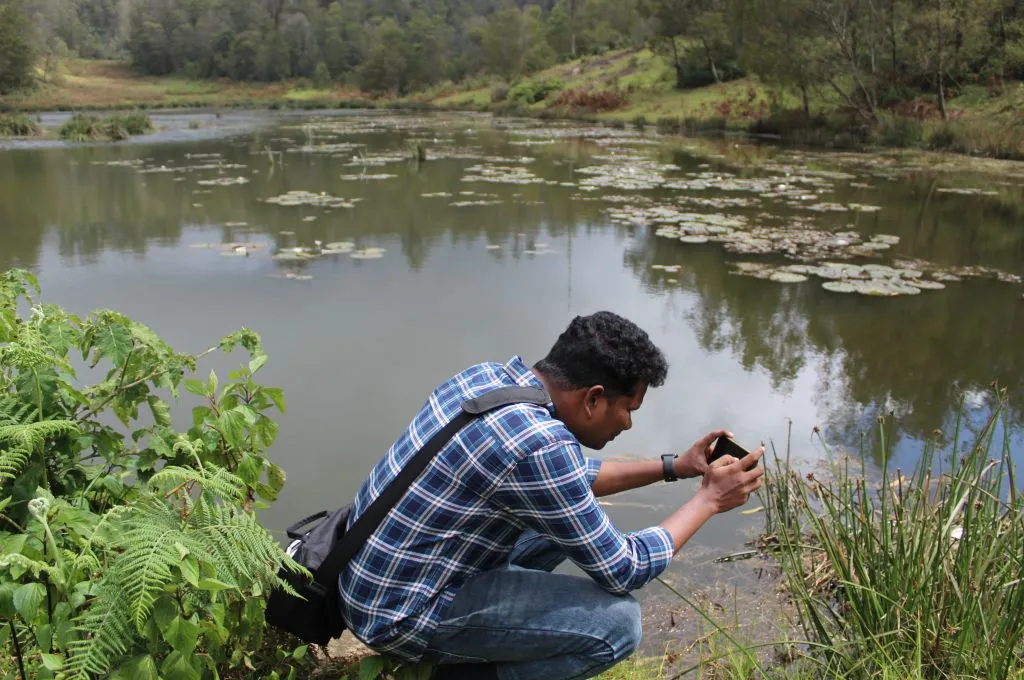There is a rich culture of generosity across the world and especially in India. People participate in giving in ways that are not always easily measured. Generous behaviour is also quite diverse—people give in a multitude of ways. Nonprofits across the world, however, have little understanding of people’s generosity because the data is not as good as it could be—it is siloed within organisations, and opaque. GivingTuesday’s Data Commons platform is working to address these problems by providing useful and relevant data that challenges some of the assumptions that organisations make about giving.
We launched the Data Commons in 2015 because we wanted to measure what was happening on GivingTuesday.1 We asked big donation and crowdfunding platforms and payment processors in the United States to help us get a sense of how much money was being donated online on that day. We ended up collecting more data about online giving than had ever been collected before. In the United States, GivingTuesday has been the single biggest day for donor acquisition, even in 2020—a year notable for an influx of new donors—and generated USD 2.7 billion in donations in 24 hours in 2021.
Our work with the Commons, and the breadth and depth of data it generated, also gave us some key insights into generosity.
Generosity is abundant
For many years, the value of charitable donations in the United States, as a percentage of GDP, has been flat and donations have plateaued. This led many in the social sector to believe that it is not possible to get people to donate more. However, 10-year longitudinal data on individual giving transactions showed us the impact that GivingTuesday could have on giving behaviour and net result for organisations.
Nonprofits often believed that if someone gives more today, they will give less tomorrow. When we looked at the granular data on this, it showed us that GivingTuesday was not only not cannibalising donations from the rest of the year but was also driving a net positive result. It helped us understand that generosity is not a competitive market or a zero-sum game. It is extraordinarily elastic everywhere in the world.
Other than the statistical impact of GivingTuesday, which led to significantly more giving, we saw other patterns, opportunities, and risks within the donation ecosystem. It influenced our strategic objectives, which were to grow, inspire, and celebrate people’s generosity. We started working with more countries, building up infrastructure, and supporting nonprofit and community campaigns.
India has always had rich cultural generosity, and we want to learn about it and encourage a deeper understanding of it in the rest of the world. Understanding the behaviours of everyday givers in India can be used to identify options and opportunities throughout the social sector.

Generosity takes all shapes and forms
We are looking at four dimensions of participation: giving money, giving time, giving things, and advocacy. And we realised that it is the least common behaviour to only donate money. Most people do more than one thing, and they are more interested in a relationship-based giving experience, one that goes beyond the financial.
The formality of the generosity mechanism also varies. On one end of the spectrum, you have donations made to registered nonprofit entities. On the other end, people give spontaneously to their community. In the middle, you have mutual aid and structured organised networks that are not incorporated. Even in countries such as the United States that have a robust nonprofit ecosystem, most giving does not involve nonprofit entities.
In fact, in many communities and countries, including India, generosity is the first principle of citizenship. In some places, it is just part of everyday behaviour. It is an ingrained social norm to give within your community and a part of how you support one another. It is not seen as an additional, ‘altruistic’ activity.
When people are asked if they volunteer, for example, some who say they don’t volunteer are actually giving their time in many ways—coaching their children’s baseball teams, driving their grandmother to church, or doing things they don’t consider as extra for their community. These are measures of generosity.
We should, therefore, be careful about the labels we use. We must seek to uncover what motivates people to give, rather than just counting how much money they donate. The data we have been collecting and tracking across different forms of giving continues to reinforce the point that generosity is abundant.
How should we understand generosity?
Organisations should not get caught in the false dichotomy between giver and receiver, rich and poor, formal and informal, and valid and invalid. Such dichotomies become barriers to understanding generosity.
1. Connect on values
The best indicator that someone is going to do good (by donating money to a nonprofit, for instance) is when they have done other generous things. This can mean different things in different contexts. In the United States, for higher participation we need a broader spectrum of givers, and we need to meet them where they are. In Mexico and India, there are other factors at play, including trust in institutions. But trust is not enough to get someone to do something. It is just a necessary foundation. The best way to build trust is to connect with people on their values and show them that you share those values. Understanding and partnering in the things that people care about in their communities is important.
2. Embrace people’s idea of generosity
The nonprofit sector cannot dismiss what communities do, and how they practice giving, just because it doesn’t fit into our model of giving. We should recognise the agency of people and see them as extraordinarily generous communities doing important things.
Organisations should care about more than just financial giving. But even if that is all they care about, the way to achieve it is to embrace people’s broad spectrum of generosity, understand it, measure it, and partner with them on it. If nonprofits want more monetary donations, they need to understand the entire experience holistically—they should think beyond money, and lower barriers to participation.
3. Understand that modes of giving are not competitive
People talk about ‘replacement behaviours’, which references the idea that people giving via one channel or on one day reduces their giving in other areas, at other times, for other causes, or through other giving channels. But the data shows that these are not competitive mechanisms. As soon as nonprofits release themselves from this limiting belief that giving modes cannibalise one another, it opens opportunities for engaging people in lots of ways.
4. Use data to democratise philanthropy
At GivingTuesday, we are building mechanisms to track donation trends, as well as to understand the full spectrum of giving and generosity behaviours. The more we focus on, measure, and engage with only high-net-worth giving, the greater the power and voice these givers have on solving the problems that we face. It also influences who solves these problems.
Philanthropy needs to be democratised—we want to empower everyday givers and their idea of generosity. COVID-19 has highlighted these power structures sharply, and now is the time to use data to help make this shift to a generosity movement.
—
Footnotes:
- Giving Tuesday is the first Tuesday after Thanksgiving in the United States and is based on a simple idea: a day that encourages people to do good. In India it is celebrated as the Tuesday of Daan Utsav (2–8 October every year).
—
Know more
- Read GivingTuesday’s report on worldwide generosity in 2021.
- Learn how nonprofits can tap into the potential of individual giving.
Do more
- It’s easy to celebrate GivingTuesday. Consider giving things, time, your skills, and your support, along with giving money, to celebrate your generosity.





